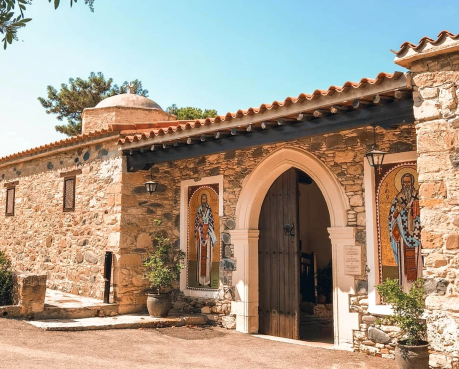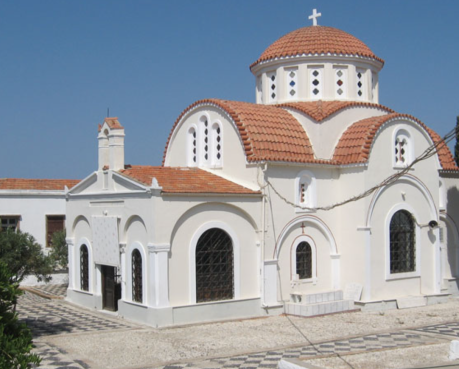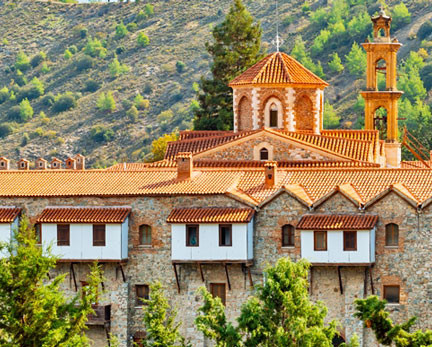Relevant
20.10.2025

Agios Irakleidios Monastery – A Testament to Cyprus’s First Martyrs
Located near the village of Politiko, not far from Nicosia, the Monastery of Agios Irakleidios stands on the site where one of Cyprus’s earliest Christian martyrs, Saint Herakleidios, was buried in the 1st century AD. Built in his honor, the monastery has long been a place of devotion and pilgrimage, blending early Christian heritage with Byzantine tradition.
The present structure dates largely to the 18th century, with later restorations preserving its distinctive Byzantine style and stone architecture. Inside the katholikon (main church), visitors can admire remarkable frescoes and icons, including depictions of Saint Irakleidios, as well as relics associated with his life and martyrdom. The convent is today inhabited by nuns, who safeguard both its spiritual life and cultural treasures.
Surrounded by cypress and pine trees, the monastery is a peaceful retreat for pilgrims and travelers alike. Its quiet courtyards and sacred relics make it not only a religious landmark but also a place of contemplation, where the island’s deep Christian roots are felt in every stone and prayer.
06.10.2025

Agios Minas Monastery – A Sanctuary of Peace in Larnaca’s Hills
Nestled in the hills near the villages of Vavla and Kato Drys, the Agios Minas Convent is a serene sanctuary dating back to the 15th century. Surrounded by olive and citrus groves, this peaceful monastery has a long history of devotion, decline, and revival, offering visitors a glimpse into Cyprus’s spiritual heritage.
The convent’s architecture combines Byzantine and Gothic styles, with pointed arches, ribbed vaults, and a central church adorned with 18th-century frescoes of Saint George and Saint Minas. Today, the nuns maintain traditions of icon painting and produce handmade preserves and herbal goods, which reflect the blend of faith and local culture.
For travelers in the Lefkara region, Agios Minas is more than a religious site — it is a place of reflection and calm. Modest dress is required, but those who visit are rewarded with tranquil courtyards, centuries-old art, and the warm hospitality of the sisterhood.
22.08.2025

Machairas: A Byzantine Sanctuary in the Forests of Cyprus
High on the slopes of the Machairas Mountains, nestled among pine‐covered hills approximately 40 km southwest of Nicosia, stands the serene Monastery of the Virgin Mary of Machairas. Founded in the late 12th century on the spot where a miraculous icon—said to have been painted by the Evangelist Luke—was found in a hidden cave, the monastery inherits its name from the Greek word for knife (machairi), symbolizing the divine tool that revealed the sacred image.
Over the centuries, Machairas evolved into a revered royal and stavropegic monastery, enjoying imperial patronage and autonomy. Its charming Byzantine‐style architecture—marked by red‐tiled roofs, a domed central church, monks’ cells, arcades, and a gentle courtyard—radiates a timeless spiritual serenity. Despite fires and rebuildings, its resplendent iconostasis and the deeply venerated icon remain at its heart.
Today, this remote haven remains home to a devoted brotherhood of monks whose ascetic life reflects the austere traditions of Mount Athos. It also welcomes pilgrims and visitors drawn by its tranquil beauty, the hush of the forested slopes, and the silent testimony of the centuries.